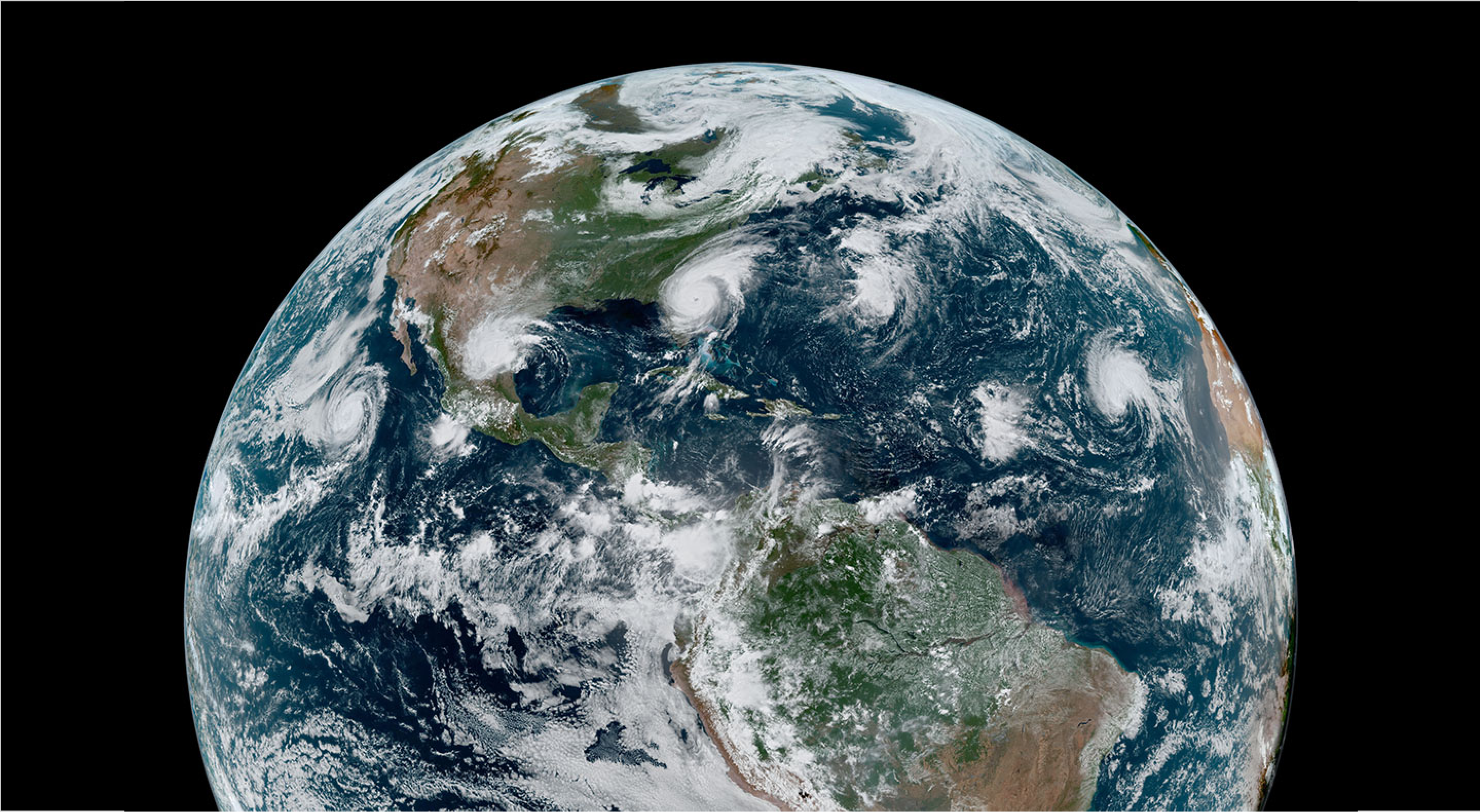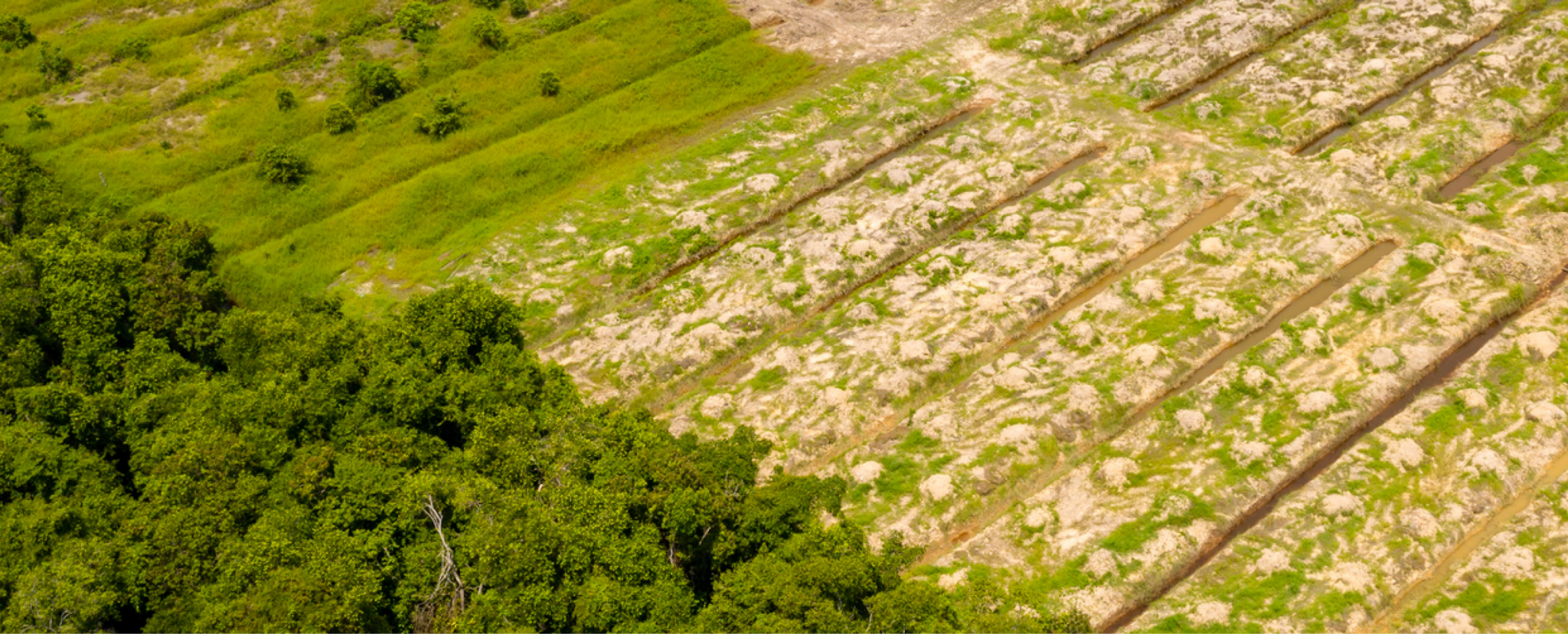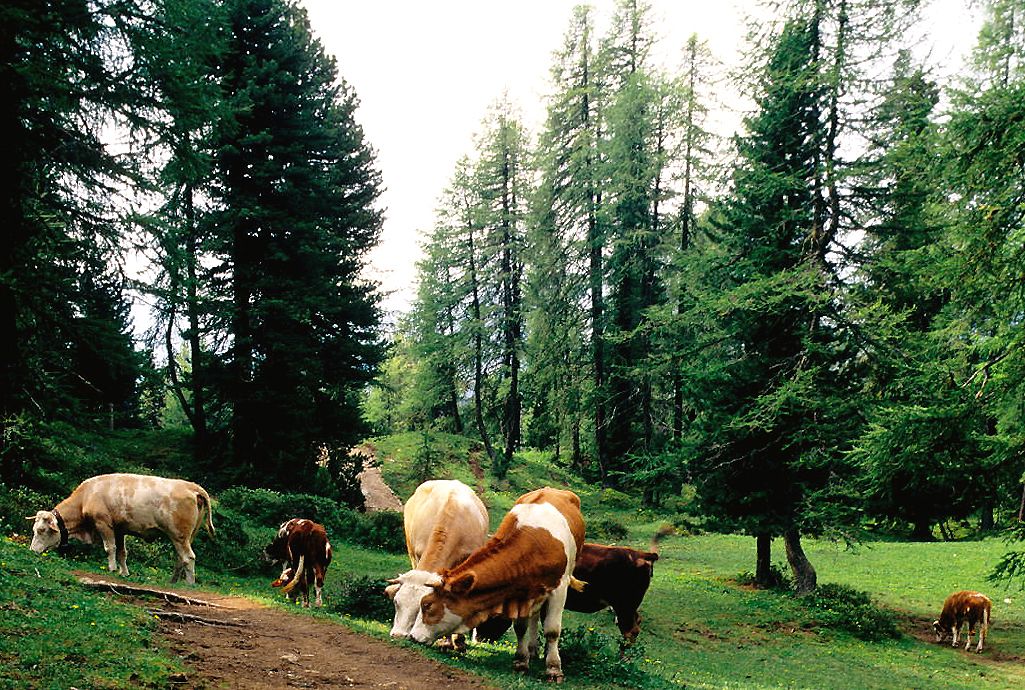
Looking back and learning from our relationship with land.
- Devika Bakshi
Earth’s lush and resourceful land has allowed us to grow our communities, expand across the globe, and persist for over 200,000 years. Even today, while much of the modern world may feel like it is dominated by technology and highly engineered spaces, we are still utterly dependent on nature, particularly the gifts of land.
Throughout our history, humans have experimented with different ways of living and interacting with land: hunting-gathering, pastoralism, subsistence farming, and industrial agriculture, to name a few. Each practice transformed the terrain and nearby plant and animal life, but with different long-term ecological consequences. Reflecting on the past can help inform our choices for the future. How might our expectations of land—and our relationship with it—change in a warming world?
Around the dawn of civilization, Earth’s land surface consisted entirely of seminatural and wild lands. Since that time, humans have appropriated more and more land, especially after the late 1800s ushered in an era of industrialization and widespread fossil fuel use. By the 21st century, humans had altered the vast majority of non-desert, non-frozen land areas.
Modification
The first people to develop settled communities about 12,000 years ago chose places with temperate climates. Over the ensuing millennia, human populations grew the most in such areas, and agriculture and urbanization expanded into temperate forests and savannas, often eliminating existing ecosystems.
The people who lived in the Arctic and the Tropics developed cultures and practices that had a low impact on the land and even helped sustain the ecosystems of these areas. Ancient indigenous farming practices in the Amazon often resembled what we now call “agroforestry,” where a wide variety of food crops are grown within standing forests.
Thanks to such practices, all people on Earth benefited from the climate stabilization these places provided: The Tropics absorbed and stored huge amounts of carbon in forests. The Arctic stored carbon in permafrost, and its ice reflected energy from the sun back into space. Today, Earth’s land provides us the service of capturing and storing about 30% of annual global CO2 emissions.
Expansion
The discovery of fossil fuels in the 19th century changed everything. By ushering in a new wave of colonization, global industrialization, and population growth, we transformed land around the world at a pace never before seen in human history. We now use approximately half of all habitable land to grow crops for food, animal feed, and biofuels. Our rapid burning of fossil fuels further expanded our demands of Earth’s land by asking it to absorb a portion of our emissions.
To meet the needs of a growing population, we’ve also transformed our farming practices. For most of human history, food production was a local endeavor, cultivating crops that were native to the location or locally adapted and that were often intermingled to promote the ongoing health and productivity of the soil. Cultivation practices reflected the knowledge of local farmers and indigenous people, who were cognizant of the interconnections between fields and the surrounding ecosystems.
It wasn’t until the so-called “Green Revolution” began in the mid-20th century that high-yield production monocultures took hold, driven by chemical fertilizers and managed water supplies. These new practices helped alleviate hunger over the short term, particularly in poorer countries. However, over the long term, the land management practices associated with the Green Revolution were detrimental to productivity, driving out biodiversity and culturally significant native varieties in our food supply, and leaving our crops and livestock more vulnerable to pests, disease, and the changing climate.

Domination
Humans have altered the land directly over the course of our entire history, but only in recent years have we begun to appreciate the degree to which we can affect it indirectly through global climate change caused primarily by fossil fuel use.
Though we understood the physics of the greenhouse effect beginning in the mid-19th century, it was in the early 1980s that scientists tied an observed sharp increase in global temperatures to the higher concentrations of atmospheric CO2 from industrialization. Rather than heeding the scientists’ warning, we continued down the same path, almost doubling emissions over the next several decades.
In that time, we have seen increasing temperatures, widespread drought, and more extreme weather. Glaciers have retreated or disappeared entirely, and late summer Arctic sea ice now covers only half the area it did only 40 years ago. Scientists suspect that, on the whole, tropical forests are now emitting more carbon than they are absorbing annually. A similar trend is underway for permafrost in the Arctic. Unmistakably, humans have altered every ecosystem on the planet—even in places we don’t inhabit and that few of us will ever see in person.
Climate zones are a way of categorizing the world’s climates. They help us understand the seasonal temperature and precipitation conditions in a location and, subsequently, what vegetation is likely to grow there. However, as the atmosphere warms, some local climates will transition into new zones, potentially reshaping the variety and location of the world’s plants and animals.
These indirect effects are likely to result in the most profound changes to Earth’s biosphere over the long term. The stable climate and hospitable temperatures of the Holocene were favorable not only to humans but to plants as well. Just as our bodies, customs, and infrastructure are best suited to particular environments, every plant has a climatic niche to which its photosynthesis, transpiration, and fertility are acclimated. Outside comfortable ranges, plants suffer and become less productive. The more time a plant is exposed to higher temperatures, the more stress it will experience until it eventually dies. We are getting dangerously close to important thresholds. If the current rate of emissions continues, scientists say that by midcentury, some of the most productive biomes in the world will degrade to about 50% of their capacity to store carbon.
In a warming world, we are increasingly asking the earth’s land to provide food for our growing population, support the plants and animals that sustain ecosystems, make Earth biologically diverse and beautiful, and “offset” our collective carbon emissions—past, present, and future. And we are asking it to do these things while we continue to rapidly release ancient carbon into the air and watch temperatures climb toward levels that the majority of ecosystems are not prepared to withstand.

Restitution
To meet our growing needs, we can strip land of its resources or utilize its gifts while simultaneously regenerating its nutrients to benefit the future. Informed by our experimentation with land management in the past, we now have a clearer understanding than ever of the consequences of both. For hundreds of thousands of years, Earth’s land has enriched our bodies, our communities, and our world. But there are physical limits on how much it can provide. If Earth is to continue to be the great gift that keeps on giving, we—its ultimate and only caretakers—will need to start giving back.
Photosynthesis
Transpiration
Transpiration describes the movement of water through a plant. Plants take up water through roots and use small portions of that water for growth and metabolism. Around 97-99% of the remainder exits the plant through pores in leaves, stems, and flowers. The evaporation of water through these open pores is the “cost” associated with absorbing carbon from the air for photosynthesis.